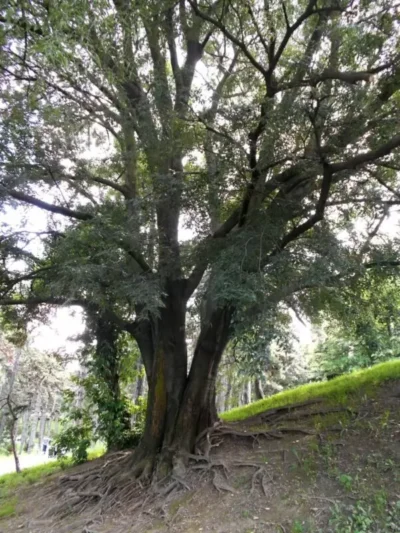
The Midwest region is home to a diverse array of ecosystems, each one supporting an equally varied mix of plant and animal species. Trees play a vital role in these habitats, providing food, shelter, and nesting sites for countless wildlife. From birds and mammals to insects and fungi, the health of the Midwest’s biodiversity is closely tied to the presence of native tree species.
At Cold Stream Farm, we understand the importance of these trees and are committed to offering a selection of native species that help preserve and restore wildlife habitats across the region. In this blog, we’ll explore some essential tree species for Midwestern wildlife habitats, each one contributing uniquely to the local ecosystem.
1. White Oak (Quercus alba)
The white oak is a keystone species in Midwestern forests, widely valued for its role in supporting biodiversity. This sturdy tree is well-suited to a range of soil types and provides a rich source of acorns, which are a critical food source for deer, squirrels, and numerous bird species, including turkeys and woodpeckers. Beyond its role in feeding wildlife, the white oak also offers excellent nesting sites for birds and habitats for a variety of insects. Oak trees, in general, are known to host hundreds of caterpillar species, which, in turn, attract songbirds.
2. American Basswood (Tilia americana)
Often referred to as the bee tree, the American basswood is a favorite among pollinators. Its fragrant yellow flowers, which bloom in late spring, attract bees, butterflies, and other pollinating insects. In fact, the nectar from basswood blossoms produces high-quality honey, making this tree particularly beneficial for supporting bee populations. The basswood also supports mammals and birds with its small, nut-like seeds and provides excellent nesting sites within its large, spreading branches.
3. Sugar Maple (Acer saccharum)
Known for its stunning fall colors and sweet sap, the sugar maple is more than just a beautiful addition to the landscape. This tree is highly beneficial to wildlife, providing shelter and sustenance through its seeds, which are a valuable food source for squirrels, chipmunks, and various bird species. Sugar maples also play a significant role in the ecosystem by enriching the soil with their leaf litter, which decomposes to create nutrient-rich soil that supports other plant life.
4. Black Cherry (Prunus serotina)
The black cherry tree is a wildlife powerhouse, offering an essential food source through its small, dark cherries. These fruits attract a wide variety of birds, including robins, bluebirds, and thrushes, as well as mammals such as raccoons, foxes, and black bears. In addition to its fruit, the black cherry’s bark and leaves support numerous caterpillars, including those of the eastern tiger swallowtail and the cecropia moth.
5. Eastern Red Cedar (Juniperus virginiana)
The eastern red cedar is a resilient and adaptable tree species that thrives in poor soils and provides year-round cover and food for wildlife. Its dense evergreen foliage makes it an ideal shelter for birds, particularly in winter, offering protection from harsh weather and predators. The blue-gray berries of the eastern red cedar are an important food source for over 50 species of birds, including cedar waxwings, sparrows, and bobwhite quail.
6. Hackberry (Celtis occidentalis)
Hackberry trees are another top choice for wildlife-friendly landscaping in the Midwest. This hardy tree is particularly valuable for its resistance to disease and its ability to thrive in a variety of soil conditions, including wet or dry areas. Hackberry fruits are consumed by many bird species, including woodpeckers, mockingbirds, and robins, as well as small mammals. The hackberry also supports specialized caterpillars, like the hackberry emperor butterfly, providing a crucial habitat for these insects.
7. Red Mulberry (Morus rubra)
Red mulberry trees produce an abundance of small, sweet berries that are highly favored by birds, raccoons, and even people. The berries appear in late spring, drawing in species like blue jays, orioles, and thrushes. Mulberry trees are relatively low-maintenance and can thrive in different soil types, making them a practical choice for many Midwest landscapes.
Cold Stream Farm: Committed to Biodiversity and Wildlife Habitat Preservation
At Cold Stream Farm, we believe that preserving biodiversity is essential to maintaining a healthy and resilient ecosystem. By offering a wide selection of native trees suited for Midwest habitats, we provide property owners, landscapers, and conservationists with the tools needed to create thriving, wildlife-friendly environments.
By choosing Cold Stream Farm’s native trees, you’re not only enhancing the beauty of your property but also contributing to the broader effort to conserve and restore natural habitats. Whether you’re planting a small urban garden or a large rural acreage, our trees will play a key role in sustaining the delicate balance of the Midwest’s ecosystems.
Contact Cold Stream Farm at (231) 464-5809 today or visit us online for more information!

